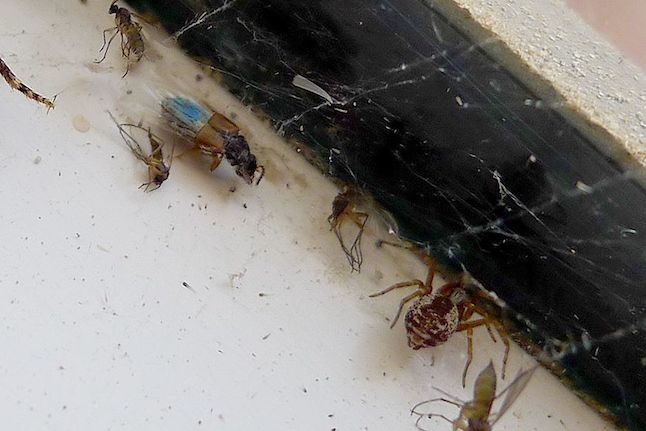Fruit flies buzzing around the bins, cockroaches in the kitchen and ants invading your food cupboards can be a common sight in your Spanish home, more often than not in summer.
But what can you do when insects invade your home?
What types of pests are common in Spain?
Bugs and insects that commonly invade homes in Spain include fruit flies, ants, stink bugs, cockroaches, pantry moths, plaster bagworms and mosquitoes.
Those who have pets may also have a problem with your animals bringing fleas and ticks into the home too.
READ ALSO: Ticks are proliferating in Spain: How to avoid them and protect yourself
These can cause a nuisance, not only flying around your home and biting you (in the case of mosquitoes, fleas and ticks), but they can get into your food and lay eggs in your cupboards.
How can I get rid of bugs in my home?
One of the most important ways you can keep insects and other bugs out of your home is to eliminate food sources.
This means always doing the washing up as soon as you’ve finished eating so there are no scraps laying around, sweeping kitchens and dining rooms regularly and putting opened food items in the fridge instead of the cupboards.
You also need to make sure you regularly empty your rubbish bin and that there are no gaps between the lid and the bin that flies can get in through.
Dusting, hoovering and general regular cleaning will also keep other insects at bay such as plaster bagworms and moths that lay larvae on your walls and ceiling.
Those with pets should make sure that animals are treated with flea and tick protection and combed through with special flea combs to make sure bugs are not stuck in their fur.
Summer can of course be very hot in Spain, with temperatures regularly in the high 30°Cs or even low 40°Cs in some parts of Andalusia and other regions, meaning that windows and doors are often left open to ensure a breeze. Unfortunately, this means that your home is more accessible to insects too.
If you can, get a fly screen for your doors and windows, so you can leave them open, but no bugs can get in. These fine mesh screens can be bought from hardware or home stores such as Leroy Merlin and can simply be lifted into place when you need them.
If you can’t get screens installed, then consider planting certain plants on windowsills or balconies. Lavender, basil, lemongrass and mint are all natural insect repellents.
Electric fly swats, ant traps and sticky paper can also all help eliminate pests in your home.
READ ALSO: What venomous species are there in Spain?
Insecticides
When the situation becomes worse, simple everyday cleaning won’t suffice and you may need to use insecticides to kill the infestation. There are many different brands in Spain. Both Protect Home and Compo have several different products you can use.
If you don’t want to use chemical insecticides, natural ones made from white vinegar, citrus plants, or peppermint oil can also work.
Pest control
If the situation becomes completely out of control and you find that insects are not only entering your home but that they are breeding there too, it’s time to call in the professionals. Pest control services are available across Spain.
The first step is to check your home insurance to see if they will cover this service. If they won’t, they may be able to suggest a company that can help.
Otherwise, a quick Google search for ‘Control de plagas’ (pest control) and then your area should provide you with plenty of options.
According to the home website Habitissimo, pest control services in Spain can range from €80 up to €2,000 depending on the type of infestation you have, how serious the problem is and how big your property is. On average it will cost you around €267.




 Please whitelist us to continue reading.
Please whitelist us to continue reading.
Member comments